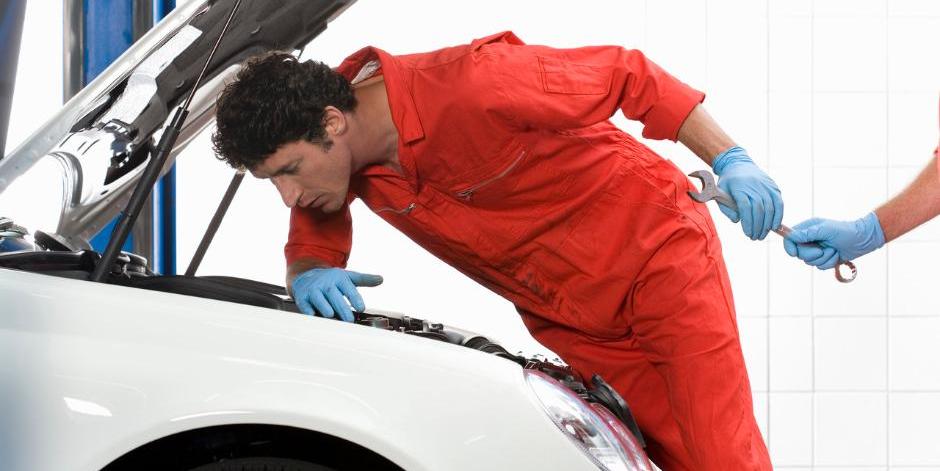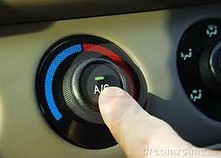
FAQs – Air Conditioning
Q: My car’s air conditioner just isn’t doing the job anymore. What could be the problem?
A: Your car air conditioner is a fairly complex system. If it’s not working well, it could be one or more of several reasons: low or no refrigerant, the compressor or condenser, a loose or worn belt, a fan, leaks in the system, or other issues.
Q: What does the compressor do?
A: The compressor is a refrigerant pump. It pressurizes the refrigerant and circulates it to the condenser. A belt connects the compressor to the crankshaft.
Q: How does the condenser work?
A: The condenser is a flat, rectangular structure made of cooling fins and tubes and mounted ahead of the radiator. In fact, what many car owners think is the car radiator is actually the condenser. As air move through the car, helped by a fan, the condenser removes heat from the refrigrant.
Q: How often does my vehicle’s air conditioner need to be recharged?
A: It depends on the amount of refrigerant and whether your system leaks. It’s not unusual for a car air conditioner to lose 1-2 ounces of refrigerant per year. Some compact cars require 10 ounces; some SUVs require 40 ounces. When your car loses its cool, bring it to Tolker Auto Service. We’ll diagnose the problem, repair your unit, and recharge the system if necessary.
Q: How does Tolker Auto Service determine whether an air conditioner is leaking?
A: Our technicians use two methods: an electronic refrigerant leak detector—or “sniffer”—and dye tracing. Hand-held instruments can detect leaks down to 0.1 ounce per year. Slow leaks can be traced by injecting a dye into the refrigerant, using the air conditioner for a week and more, and then shining a special ultraviolet light onto the components and connections. Dye shows up where refrigerant escapes from the system.
Q: How does my car air conditioner work?
A: Air conditioners take advantage of condensation and evaporation. As the refrigerant in your air conditioner changes state, it removes heat from the air in your car.
Q: Can you take me through it step by step?
A: When you turn on the A/C, you engage a belt that drives the compressor. The compressor pressurizes the refrigerant—a gas at this point—and circulates it to the condenser. Under pressure, the gas becomes extremely hot. When the refrigerant reaches the condenser, the air-cooled honeycomb structure removes heat and liquefies the refrigerant. The refrigerant, still warm and under pressure, circulates via a small tube to the receiver-drier, a canister about the size of a soup can, which removes water so that ice does not form and clog the system. The liquid refrigerant then passes through a thermostatic expansion valve. The valve removes pressure and allows the refrigerant to expand. In the evaporator—another tube and fin structure—the refrigerant vaporizes. The change in state (remember your high school physics?) removes heat from the air in the passenger compartment. A blower circulates that cold air throughout the car. Ahh....
Q: Is the refrigerant in my car air conditioner bad for the environment?
A: The current EPA-approved refrigerant, R-134a, is much safer for the environment than Freon (R-12), which it replaced in 1994. Freon depleted stratospheric ozone and caused global warming. The EPA recently approved a new refrigerant, R-1234yf, with a global warming potential that is 99.7% less even than R-134a. It is expected to be phased in by U.S. car makers by 2017. GM announced that its 2013 Chevrolet, Buick, GMC, and Cadillac models in the U.S. will use the new refrigerant.
Q: What can I do to keep my car air conditioner working at peak efficiency?
A: Stay on schedule with your vehicle’s scheduled maintenance, including periodic replacement of the cabin air filter. Dust and debris eventually clog the filter and reduce heating and cooling efficiency. Another place where leaves and other material collect is between the A/C condenser and the radiator. Ask us to check your cabin air filter and condenser the next time your car is in for scheduled maintenance.
Q: How can I cool my car down faster?
A: First, open your windows and allow the hot air that built up in your parked car to escape. Close your windows. Then, set your blower to recirculate the air inside the passenger compartment, rather than bring in air from the outside. Once you are comfortable, allow fresh air into the vehicle.


